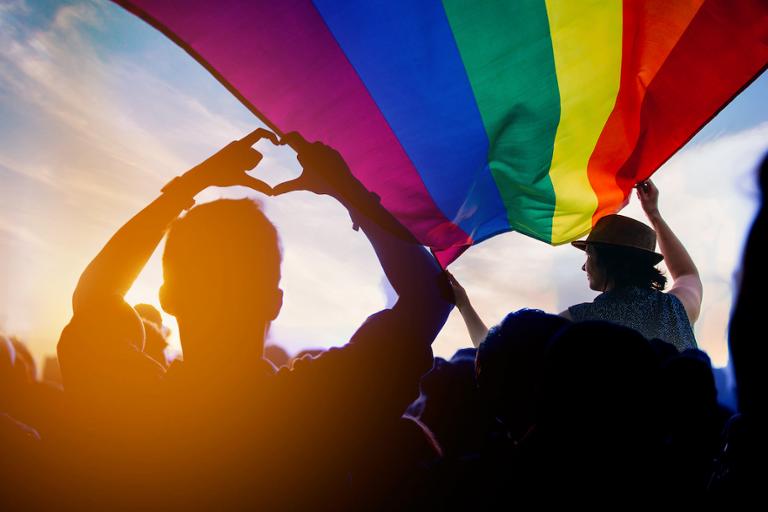For the Lesbian, Gay, Bisexual, Transgender, Queer, Intersex and Asexual (LGBTQIA+) community in tech (and elsewhere), it’s been a long path to equality, and although the leaders of some of the industry’s most powerful players have come out, factors like workplace safety and acceptance are keeping many more from fully expressing themselves.
For Amy Collins, vice president of product marketing at 1E, being a visibly queer person—a transgender bisexual woman—she was often reticent to come out in the face of homophobic or transgender comments.
“It was a binary choice to come out or have a successful career,” she explains. “Eventually I made the choice to come out, and it turned out that’s been much better than I thought. I found being authentic has enabled me to be my better self, and people have been very accepting and inclusive, and it’s drawn more junior employees to me and express their thanks that I am in a leadership position.”
In order to improve outreach to the queer community, Collins says she passionately believes getting diverse people on the interview panel is critically important. “Tech is known for being quite reasonably queer inclusive, but it’s also dominated by straight white dudes, and there is fear of discrimination in the LGBT community in tech—all of that affects personal performance,” she says. “That’s why you need diverse application and hiring panels. If you have five people that all look the same, that’s not fostering diversity, and it might put off someone like myself who is wondering if this place is the right fit.”
Simple efforts like recruiters displaying a pro-trans element in their LinkedIn bio, or a statement about being passionate about hiring diverse teams, can make a huge difference. “It’s such a simple thing,” Collins adds, “but it sends the message to that queer candidate that lets them think, ‘Maybe this thing that is different about me is going to be an asset.’”
Jamie Hart, cyber threat intelligence analyst at Digital Shadows, a San Francisco-based provider of digital risk protection solutions, pointed out inclusion and equality are still an issue for LGBTQIA+ people in tech partly due to the gender and image stereotyping in the industry.
LGBTQIA+ people may avoid positions in the field due to potential discrimination, due to factors which include LGBTQIA+ jokes, discriminatory comments regarding someone’s looks, or even comments of violence or sexual harassment. “Having anti-bullying policies is not enough,” Hart says. “LGBTQIA+ people are still required to ‘come out’ at the workplace and may have to continuously come out to co-workers, clients, vendors, and management.”
Understanding what these employees face day-to-day can help create a more inclusive workplace. To say that a workplace in inclusive is not the same as making it inclusive. “Something as simple as asking a new employee their preferred pronouns can go a long way,” she says. “Encouraging open-mindedness and understanding, with something like a diversity and inclusion team, are the first steps to tackling inclusion and diversity challenges in the workplace. I think the biggest challenges in this area is a lack of understanding, education, and open-mindedness within the field as a whole.”
Visibility and leadership roles are important signs of progress for queer people in tech because it sets the precedent that the industry is changing. Hart notes how organizations that insist on diversity and inclusion are more likely to get qualified applicants that are being turned away elsewhere.
Recent studies have identified discrimination within the tech field toward LGBTQIA+. Although there have been improvements in recent years, Hart acknowledges there is still progress to be made. “Some organizational leadership is starting to see talent and knowledge as more important than gender and image,” she says. “This gives me hope that not only will more LGBTQIA+ people will be accepted into the field, but also that they will feel more comfortable and safer coming out and being who they are at the workplace.”
Kim Vu, global head of diversity, equity and inclusion at Remitly, sees herself, as a cisgender heterosexual woman, as an ally of the queer community who can raise visibility and be an advocate for her queer peers. “How are we thinking about benefits, how are we thinking about supporting our teammates in the tech industry as a whole—we’re still figuring that part of it out,” she says. “Just because we see so many displays of performative support—flags and rainbows—that doesn’t mean our teammates no longer experience discrimination or microaggressions.”
Companies think about outreach first when they want different communities in their organization, she explains, without having even done an assessment of themselves. Tech leaders need to ask themselves what they’ve done to prepare their organization to navigate conversations they’ve never had before. For example, how can an organization make space and give support to someone in the process of transitioning?
“Most managers are unequipped to hold space for those conversations—there’s lots more training and support our managers need, and a lot of in-house work that has to happen before we do outreach,” Vu says. “So let’s do our internal work first, and figure out how we communicate that to the community to make a more welcoming space for everyone.”
For Sarah Burgaud, Director of Programs & Partnerships at StartOut, a nonprofit organization dedicated to fostering LGBTQIA+ entrepreneurship, acknowledging bias and obstacles is the first step in making sure queer people can be better represented in tech.
“Representation is really critical, and a lot of inspiration can be triggered when you hear uncommon voices,” she says. “Queer people are not a homogenous group—black queer people are experiencing a lot of discrimination, non-binary people are struggling with access to capital—there is a lack of safety in the community in some places, to say nothing of working in a country where homosexuality is not even legal.”
Burgaud points out that, like a lot of other underrepresented groups, queer people often suffer from a lack of social capital: They do not have people in their social circle who can help them navigate the landscape, be it in entrepreneurship or in tech. “Many queer entrepreneurs are not publicly out because it would set them back—the fact of being out is still a brave act and being part of that representation can come at a cost,” she says. “There is a crucial need for really intentional actions, going beyond doing something for pride, beyond volunteering, but allocating resources and money.”
Like Vu, Burgaud says it’s important to make sure the focus on education and training for managers and leaders so they can be more inclusive and be held accountable for that. “For my own community, being a queer immigrant, I want to build a more equitable society in general,” she adds. “There’s a lot of opportunity out there, but it’s just about being intentional about where you put your money, partnering with community organizations to find queer people. That can really make a big difference.”



